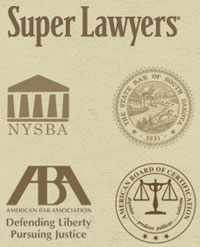Pennington County has no surface water drainage ordinance. Land-use experts tell you that zoning law is created to protect the health, safety and welfare of the citizens of the county or community. I look at water surface water drainage law as protecting the health, safety and welfare of the land and the people who own and use the land. Good surface drainage rules will also preserve the value of the land if properly employed. What is man-made surface drainage? Man-made surface drainage is a drainage project done by digging ditches, dredging, creating channels or using drain tile.
Pennington County does have floodplain ordinances, storm water ordinances and special construction rules affecting drainage on or in designated floodplain areas. These rules also deal with construction and relocation of roadways. These are specialized rules. And the rules do not cover the whole of the county. Pennington County is 2700 mi.² That’s half the size of the state of Connecticut, but most of the people in Pennington County are more pleasing than a good number of people I have met from Connecticut. In mixed rural and urban counties, including Pennington County, landowners sometimes employ water retention techniques to minimize runoff.
When considering surface water drainage law I recognize that South Dakota has established state statutes and well respected case law which addresses some of the principles of surface drainage rights, duties and responsibilities. This state- wide law however does not have the beneficial effect of home rule. And the state-wide law does not come close to perfection. No set of laws do.
What’s the missing link in Pennington County? No home rule overseeing surface drainage issues. I will list advantages of a home rule meaning an ordinance dealing with countywide drainage. Most county drainage ordinances in South Dakota include the obligation of the party who wishes to create a new drainage system project to advise the affected landowners downstream. In other words, before a drainage permit is considered by the county, the affected landowners are notified of the possibility of more water coming down the pike. That advance notification requirement is not found, by way of example, in state law. County drainage ordinances also often provide for written consent agreements. These are so-called written waivers given in writing by landowners who may be servient landowners or who are otherwise affected by a new drainage project. A provision in an ordinance encouraging cooperation among landowners before a drainage project is started encourages peace. That’s a good thing – I have handled water disputes in which the sheriff was involved. This consent provision is also not found in state law. I also find typical South Dakota surface drainage ordinance requirements include notification in advance to affected landowners. And not just to the immediate neighbor who may be the adjoining neighbor but to those who may be affected for a distance of 1/2 to 1 mile. This makes sense. This allows an effected landowner to participate in a public permit application process. Advanced notice and participation provides a more balanced picture to a board deciding a surface drainage permit application. Another advantage of a local ordinance is the requirement that the project design and other physical characteristics of the drainage proposal be disclosed to the county. This is a missing link in a reasonable chain. A surface drainage ordinance gives a good amount of environmental project decision making to local government. If the ideal is to allow more local control of decisions affecting local property a missing link can be added.
In surface water there are two categories of landowners or so called two categories of land. Land is put in classes. This is a legal form of profiling. There are them what gives and them what gets. Them what gives: Dominant estate – Any parcel of real property, usually at a higher elevation, which holds a common law or statutory legal right to drain water onto other real property. Them what gets: Servient estate – Any parcel of real property, usually at a lower elevation, which is subject to a legal right allowing a dominant estate to drain water onto the lower parcel, that is the so-called servient estate.
David Ganje practices law in the area of natural resources, environmental and commercial law with Ganje Law Office. His website is Lexenergy.net.
David L Ganje
Ganje Law Offices
Web: lexenergy.net
605 385 0330





